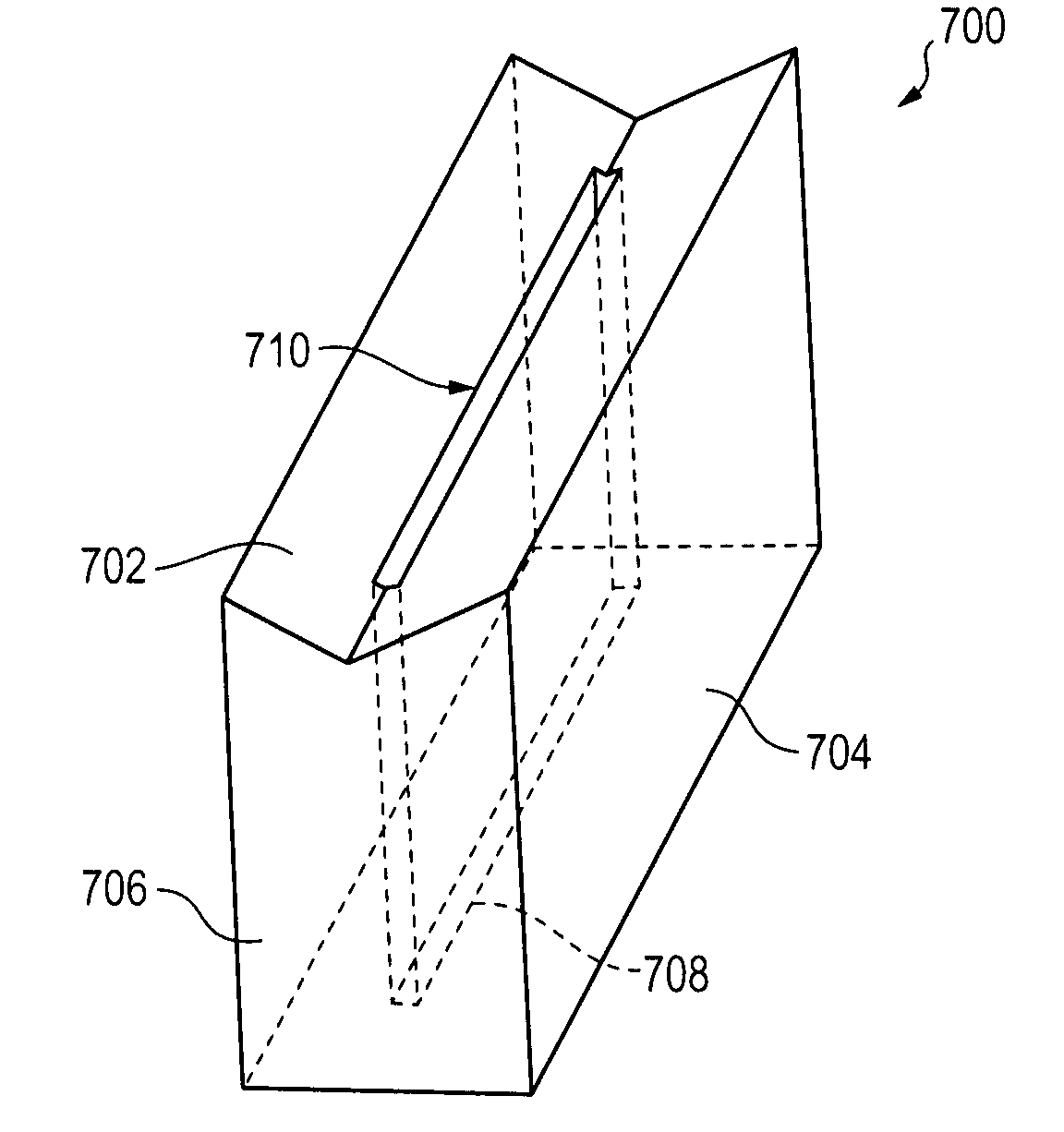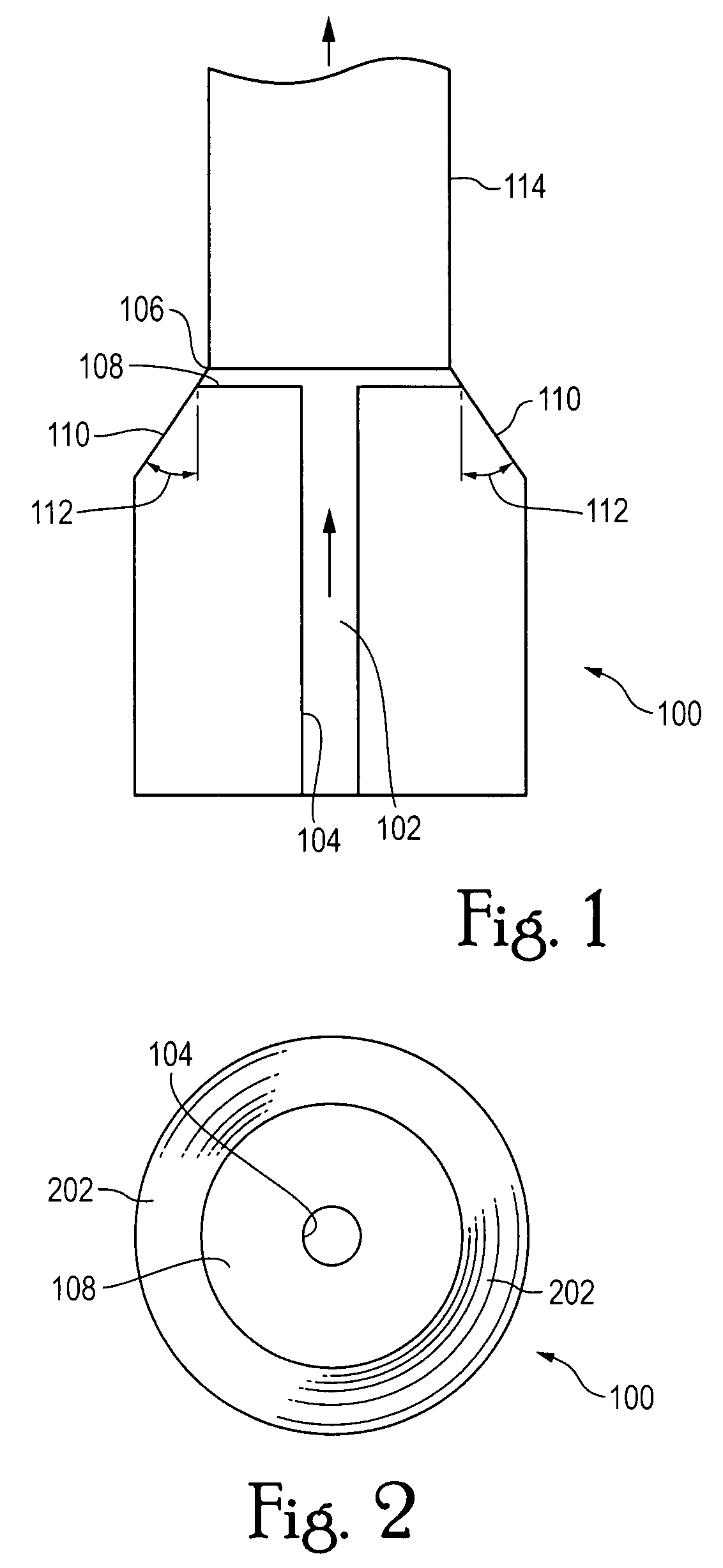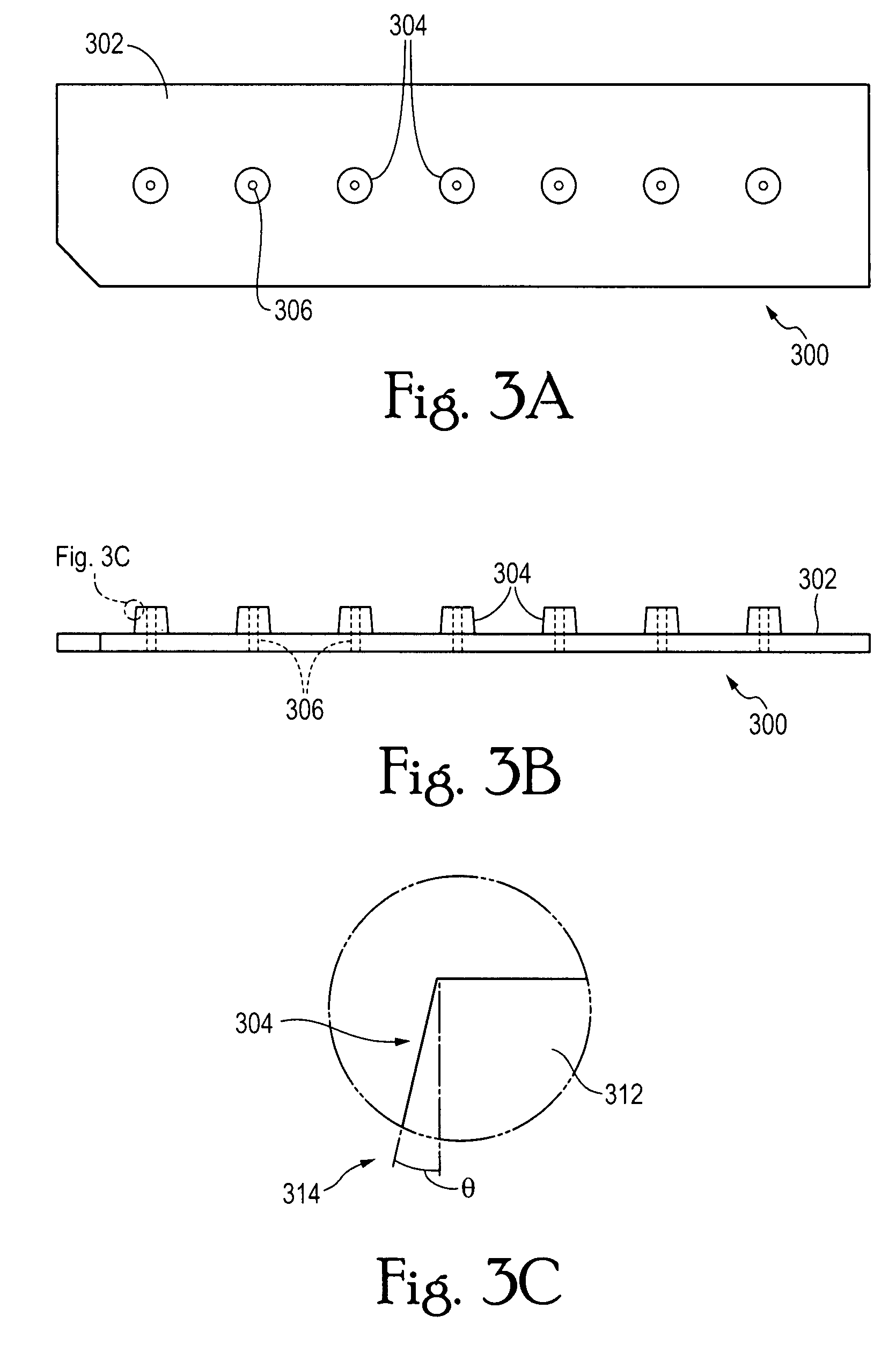Apparatus and methods of growing void-free crystalline ceramic products
a technology of crystalline ceramics and void-free crystalline ceramics, which is applied in the direction of single crystal growth, polycrystalline material growth, eutectic material solidification, etc., can solve the problems of difficult to run the process at relatively fast growth rates, degrade the optical transmission of the resulting product, and inside material leaves tiny voids in the crystal, so as to achieve fast fiber growth, improve the effect of heat content, and avoid or minimize the void in the resulting fiber
- Summary
- Abstract
- Description
- Claims
- Application Information
AI Technical Summary
Benefits of technology
Problems solved by technology
Method used
Image
Examples
Embodiment Construction
[0024]Referring more specifically to the drawings, FIG. 1 exemplifies a sloped die tip representative of the invention and its manner of use in an otherwise conventional EFG system. The drawing only shows the tip portion of the capillary-forming die 100 as it exits from the top of the crucible (not shown) where, for example, α-Al2O3 is melted for the purpose of forming sapphire fibers. The molten sapphire material 102 flows by capillary action upwardly as shown through the bore 104 of the die tip 100. The molten sapphire exits from the top of bore 104 to form a molten film 106 on the flat top surface 108 of the die 100.
[0025]Contrary to conventional EFG systems, where the sidewall of the tip would be vertical, the sidewall 110 of the die tip of FIG. 1 slopes outwardly away from the top surface 108 of the tip at an angle represented by the numeral 112.
[0026]The growing void-free sapphire fiber 114 is pulled away from the molten film 106 which is constantly replenished with molten mat...
PUM
| Property | Measurement | Unit |
|---|---|---|
| angle | aaaaa | aaaaa |
| angle | aaaaa | aaaaa |
| distance | aaaaa | aaaaa |
Abstract
Description
Claims
Application Information
 Login to View More
Login to View More - R&D
- Intellectual Property
- Life Sciences
- Materials
- Tech Scout
- Unparalleled Data Quality
- Higher Quality Content
- 60% Fewer Hallucinations
Browse by: Latest US Patents, China's latest patents, Technical Efficacy Thesaurus, Application Domain, Technology Topic, Popular Technical Reports.
© 2025 PatSnap. All rights reserved.Legal|Privacy policy|Modern Slavery Act Transparency Statement|Sitemap|About US| Contact US: help@patsnap.com



